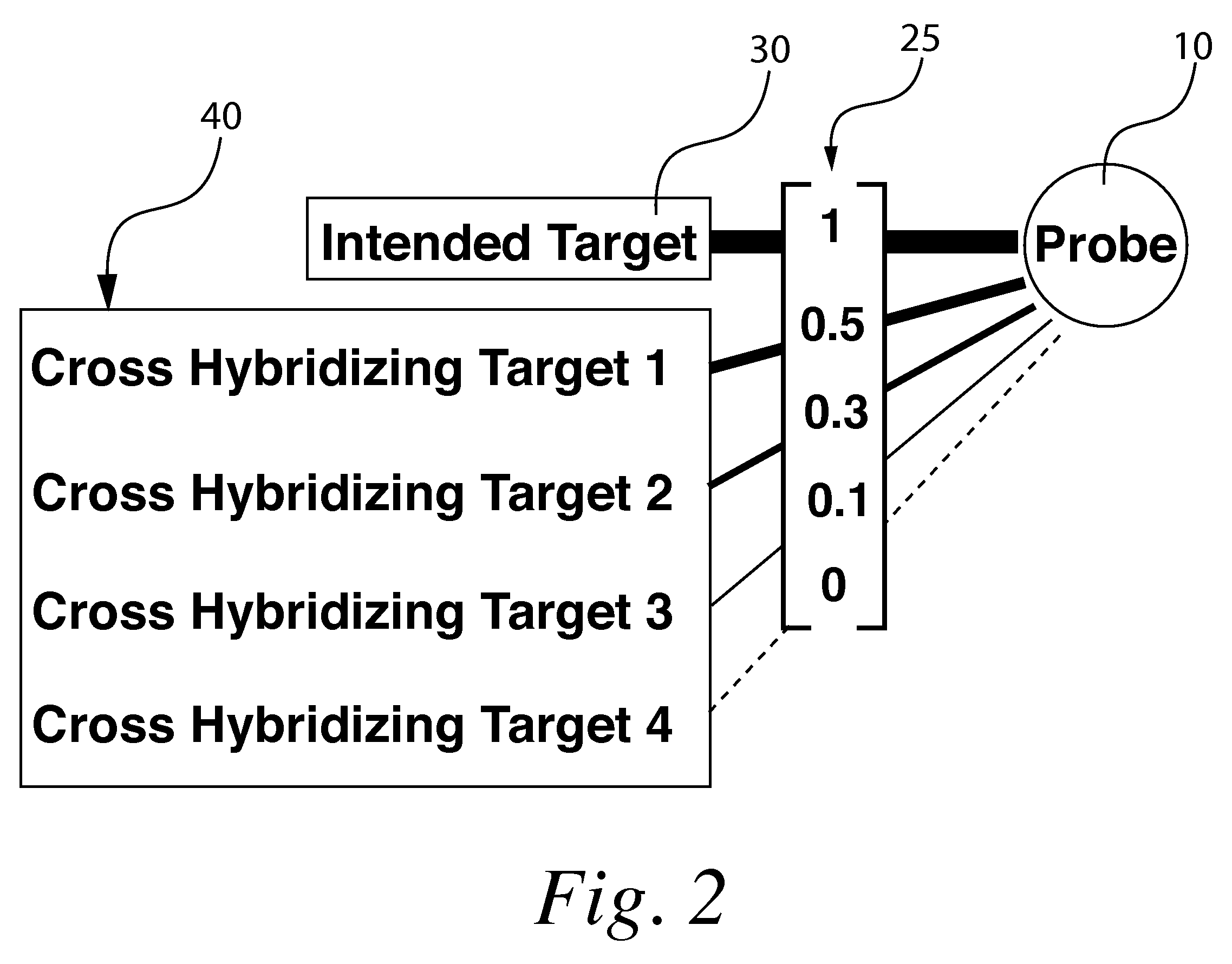Microarray Method
a microarray and microarray technology, applied in the field of dna microarrays, can solve the problems of false positive signals, distortion of various data, and inability to solve problems, and achieve the effect of solving problems
- Summary
- Abstract
- Description
- Claims
- Application Information
AI Technical Summary
Problems solved by technology
Method used
Image
Examples
Embodiment Construction
[0054]In the following description, the invention is described in connection with a preferred embodiment. References are made to accompanying figures. Values used are for purely illustrative purposes and are not representative of any limiting implementation.
[0055]Terminology has been a contentious issue in the prior art. The following terminology will be used in the descriptions that follow.
[0056]“Target” shall refer to the polynucleotide or other sample molecule of interest being investigated in a given experiment. For instance an experiment may include investigating a messenger RNA sample taken from an experimental organism in order to identify the levels of target polynucleotide present in said sample.
[0057]“Probe” shall refer to a known polynucleotide fragment or other known molecule used to investigate a target. In an example experiment investigating mRNA for instance the probes would constitute the various polynucleotide fragments immobilized on a solid support.
[0058]“Microarr...
PUM
 Login to View More
Login to View More Abstract
Description
Claims
Application Information
 Login to View More
Login to View More - R&D
- Intellectual Property
- Life Sciences
- Materials
- Tech Scout
- Unparalleled Data Quality
- Higher Quality Content
- 60% Fewer Hallucinations
Browse by: Latest US Patents, China's latest patents, Technical Efficacy Thesaurus, Application Domain, Technology Topic, Popular Technical Reports.
© 2025 PatSnap. All rights reserved.Legal|Privacy policy|Modern Slavery Act Transparency Statement|Sitemap|About US| Contact US: help@patsnap.com



